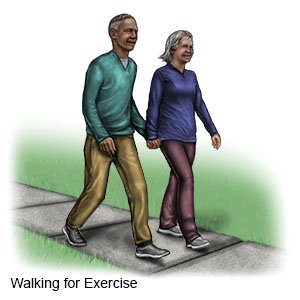Thrombosed Hemorrhoid
Medically reviewed by Drugs.com. Last updated on Aug 4, 2025.
A thrombosed hemorrhoid happens when blood clots become trapped inside your hemorrhoid. It is a common complication of hemorrhoids. Your hemorrhoid may suddenly look swollen or blue and feel very painful.
DISCHARGE INSTRUCTIONS:
Return to the emergency department if:
- Your pain does not get better after you take medicine for pain.
- You have heavy bleeding from your anus that fills 1 or more sanitary pads in 1 hour.
Contact your healthcare provider if:
- You have a fever.
- You have pus or a foul-smelling odor coming from your incision.
- You have questions or concerns about your condition or care.
Medicines:
You may need any of the following:
- Medicine may be given to decrease pain, swelling, and itching. The medicine may come as a pad, cream, or ointment.
- Acetaminophen decreases pain and fever. It is available without a doctor's order. Ask how much to take and how often to take it. Follow directions. Acetaminophen can cause liver damage if not taken correctly.
- Stool softeners help treat or prevent constipation.
- NSAIDs , such as ibuprofen, help decrease swelling, pain, and fever. NSAIDs can cause stomach bleeding or kidney problems in certain people. If you take blood thinner medicine, always ask your healthcare provider if NSAIDs are safe for you. Always read the medicine label and follow directions.
- Take your medicine as directed. Contact your healthcare provider if you think your medicine is not helping or if you have side effects. Tell your provider if you are allergic to any medicine. Keep a list of the medicines, vitamins, and herbs you take. Include the amounts, and when and why you take them. Bring the list or the pill bottles to follow-up visits. Carry your medicine list with you in case of an emergency.
Care for your wound as directed:
Do the following if your healthcare provider has made an incision in your hemorrhoid:
- Remove your bandage in 6 hours or as directed.
- Ask your provider if you need to replace your bandage. If you do, pat the area dry after your sitz bath. Put on new, clean bandages as directed. Change your bandages when they get wet or dirty. Wear a sanitary pad to absorb bleeding.
Related medications
Treatment options
The following list of medications are related to or used in the treatment of this condition.
Keep your anal area clean:
Gently wash the area with warm water daily. Soap may irritate the area. After a bowel movement, wipe with moist towelettes or wet toilet paper. Dry toilet paper can irritate the area.
Take a sitz bath as directed:
A sitz bath can help decrease pain and swelling, and help keep the area clean. Take a sitz bath 3 times a day, and after each bowel movement. Fill a bathtub with 4 to 6 inches of warm water. You may also use a sitz bath pan that fits inside a toilet bowl. Sit in the sitz bath for 15 minutes.
Apply ice on your anus for 15 to 20 minutes every hour or as directed:
Use an ice pack, or put crushed ice in a plastic bag. Cover it with a towel before you apply it to your anus. Ice helps prevent tissue damage and decreases swelling and pain.
Prevent hemorrhoids:
- Do not strain to have a bowel movement. Do not sit on the toilet too long. These actions increase pressure in your rectum and anus.
- Drink plenty of liquids. Liquids can help prevent constipation. Ask how much liquid to drink each day and which liquids are best for you.
- Eat a variety of high-fiber foods. Examples include fruits, vegetables, and whole grains. Ask your healthcare provider how much fiber you need each day. You may need to take a fiber supplement.

- Exercise as directed. Exercise, such as walking, may make it easier to have a bowel movement. Ask your healthcare provider to help you create an exercise plan.

- Avoid heavy lifting. This can cause straining and increase your risk for another thrombosed hemorrhoid.
Follow up with your doctor as directed:
Write down your questions so you remember to ask them during your visits.
© Copyright Merative 2025 Information is for End User's use only and may not be sold, redistributed or otherwise used for commercial purposes.
The above information is an educational aid only. It is not intended as medical advice for individual conditions or treatments. Talk to your doctor, nurse or pharmacist before following any medical regimen to see if it is safe and effective for you.
Learn more about Thrombosed Hemorrhoid
Treatment options
Care guides
Symptoms and treatments
Further information
Always consult your healthcare provider to ensure the information displayed on this page applies to your personal circumstances.
